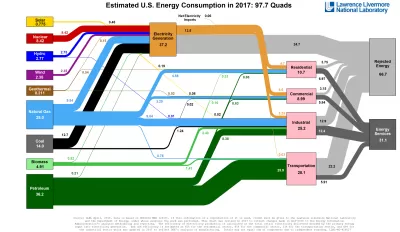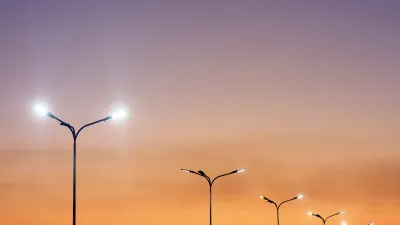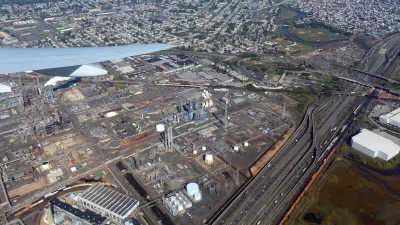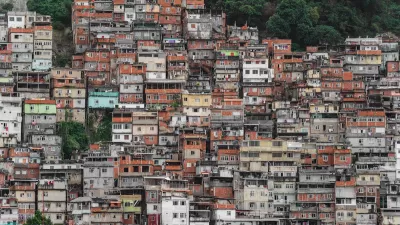The Lawrence Livermore National Laboratory has a collection of infographics illustrating the use and waste of energy in the county and in specific states by year.

A tweet by the U.S. Department of Energy brought our attention to this collection of "Energy Flow Charts' on the website of the Lawrence Livermore National Laboratory.
One thing that becomes exceedingly clear is how wasteful the entire energy industry is by the time its product gets down to the end user. In the fine print of the 2017 flow chart for the United States, we see that end user efficiency is calculated at 65 percent for the residential sector, 65 percent for the commercial sector, 49 percent for the industrial sector, and 21 percent for the transportation sector.
FULL STORY: Energy Flow Charts

Trump Administration Could Effectively End Housing Voucher Program
Federal officials are eyeing major cuts to the Section 8 program that helps millions of low-income households pay rent.

Planetizen Federal Action Tracker
A weekly monitor of how Trump’s orders and actions are impacting planners and planning in America.

Ken Jennings Launches Transit Web Series
The Jeopardy champ wants you to ride public transit.

Crime Continues to Drop on Philly, San Francisco Transit Systems
SEPTA and BART both saw significant declines in violent crime in the first quarter of 2025.

How South LA Green Spaces Power Community Health and Hope
Green spaces like South L.A. Wetlands Park are helping South Los Angeles residents promote healthy lifestyles, build community, and advocate for improvements that reflect local needs in historically underserved neighborhoods.

Sacramento Plans ‘Quick-Build’ Road Safety Projects
The city wants to accelerate small-scale safety improvements that use low-cost equipment to make an impact at dangerous intersections.
Urban Design for Planners 1: Software Tools
This six-course series explores essential urban design concepts using open source software and equips planners with the tools they need to participate fully in the urban design process.
Planning for Universal Design
Learn the tools for implementing Universal Design in planning regulations.
Heyer Gruel & Associates PA
Ada County Highway District
Institute for Housing and Urban Development Studies (IHS)
City of Grandview
Harvard GSD Executive Education
Toledo-Lucas County Plan Commissions
Salt Lake City
NYU Wagner Graduate School of Public Service





























